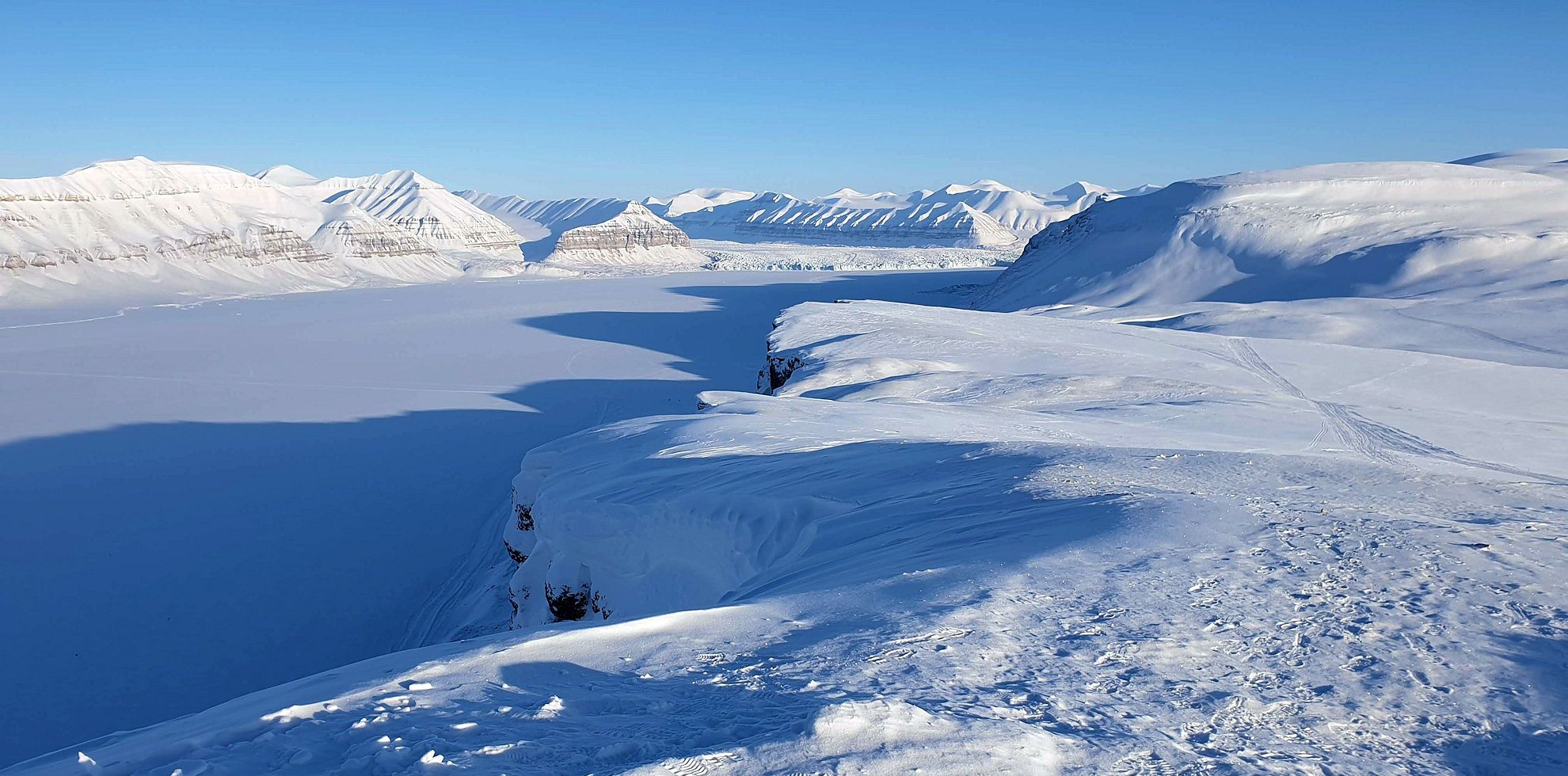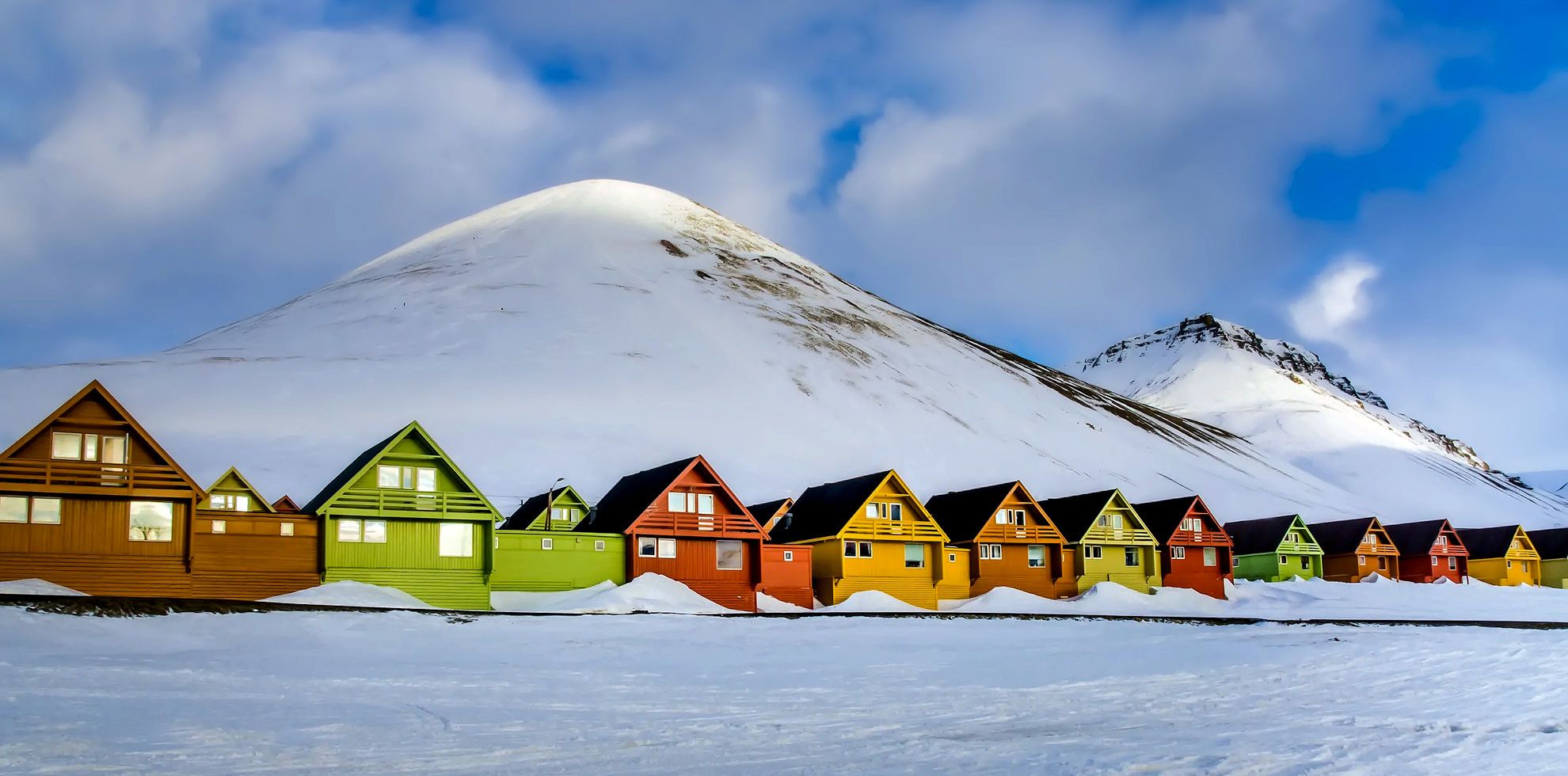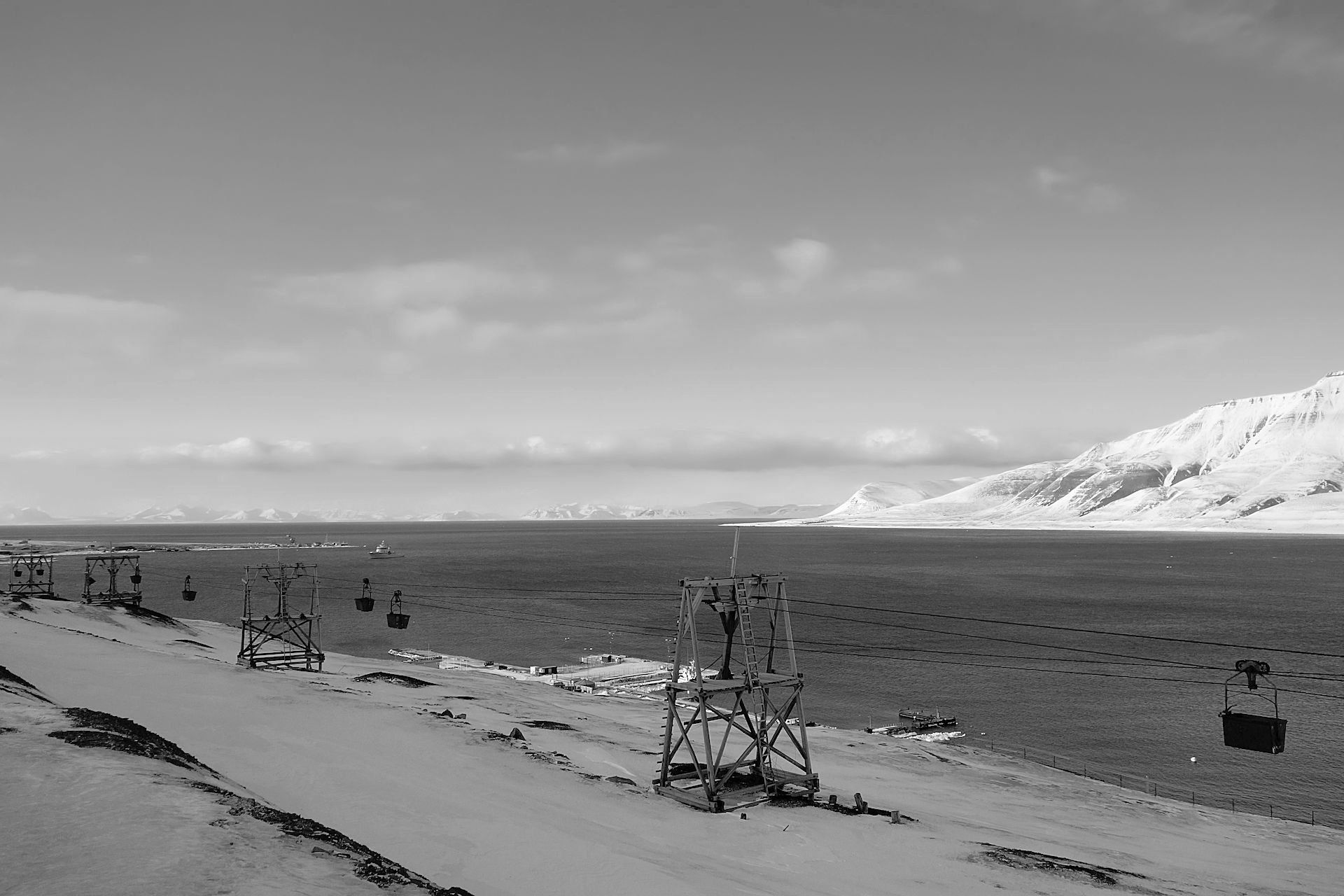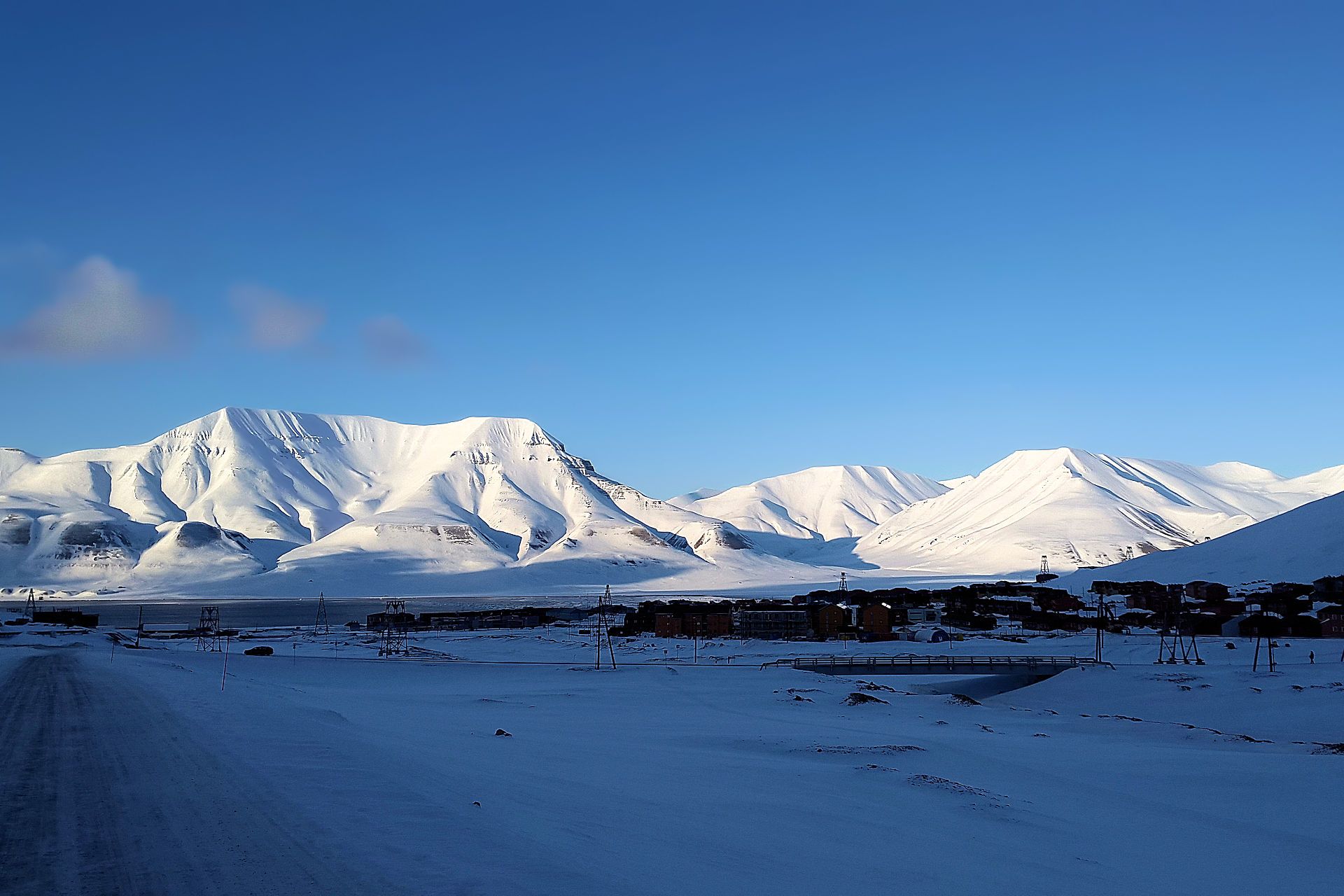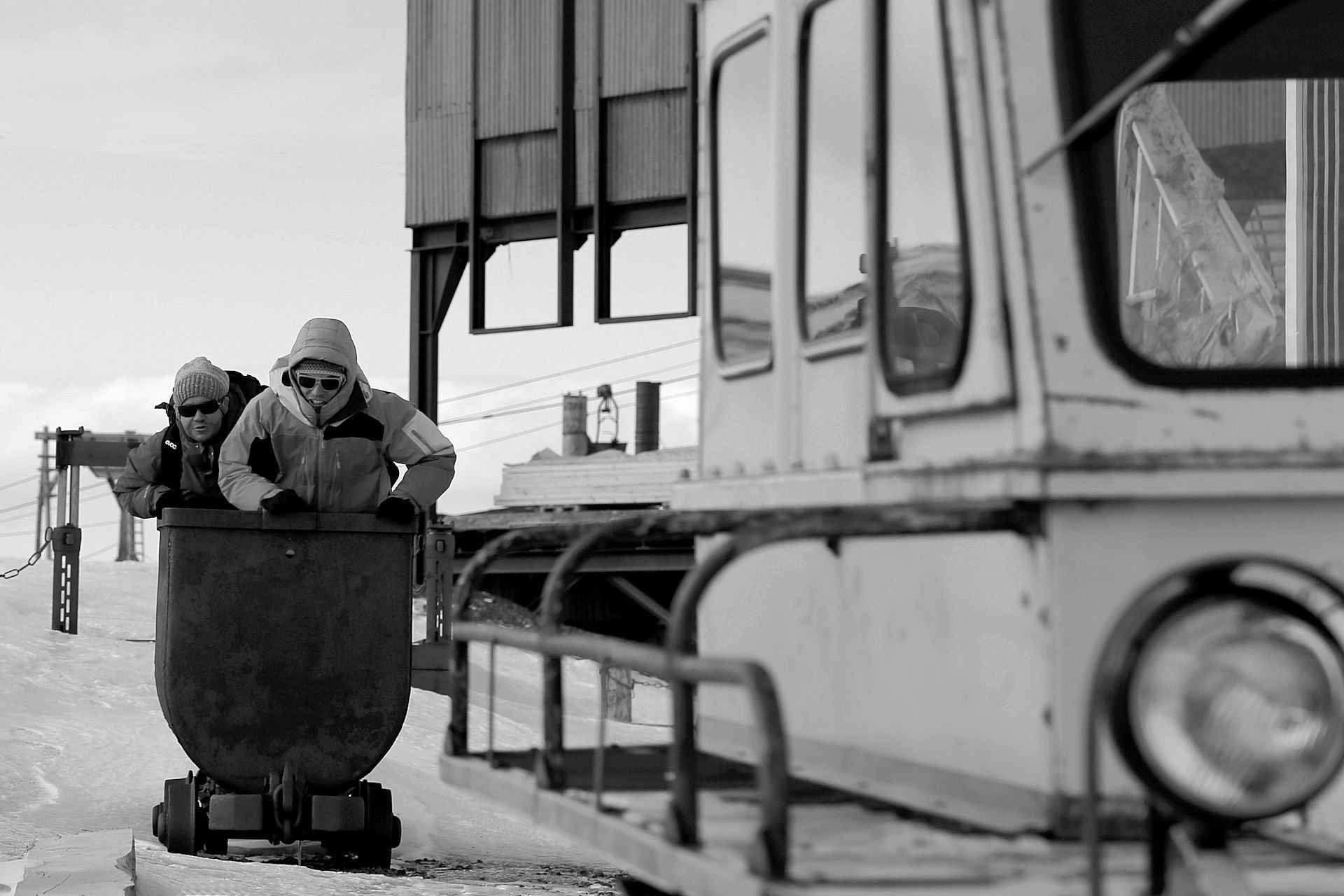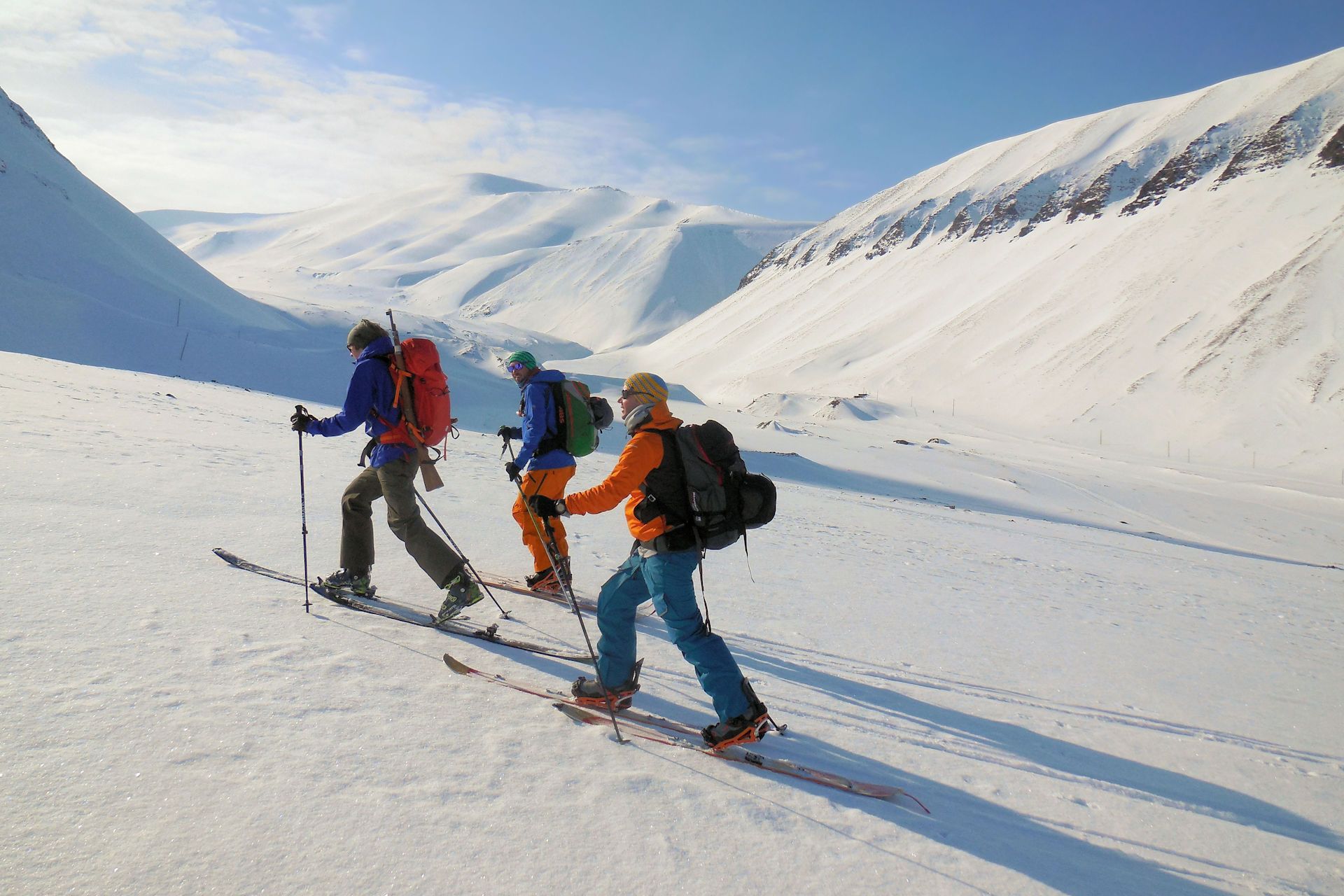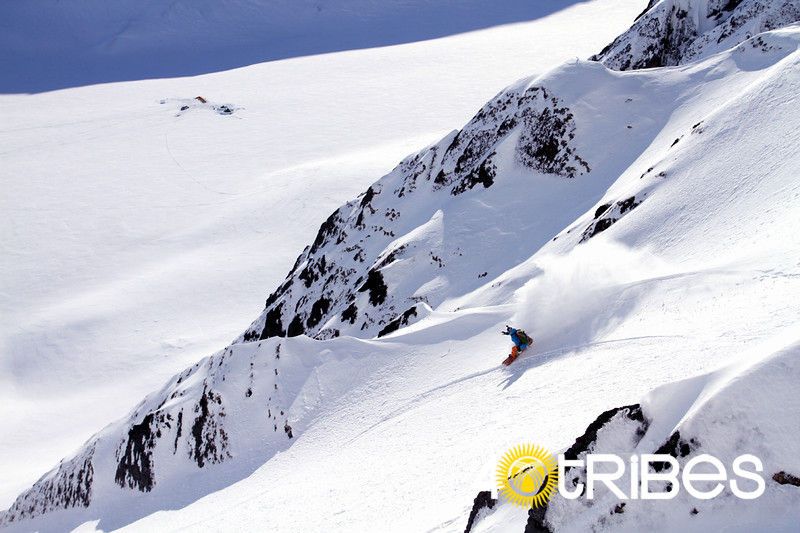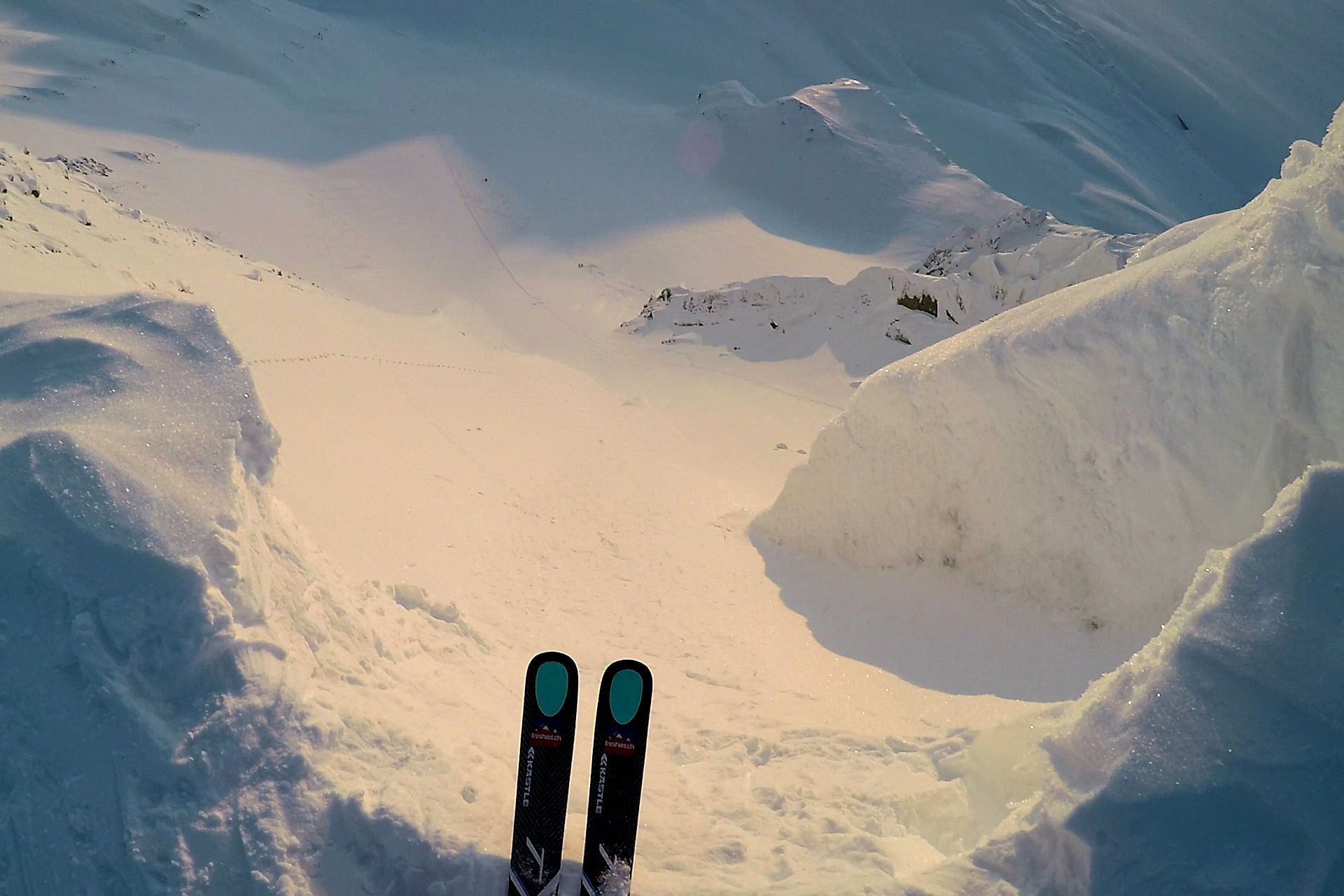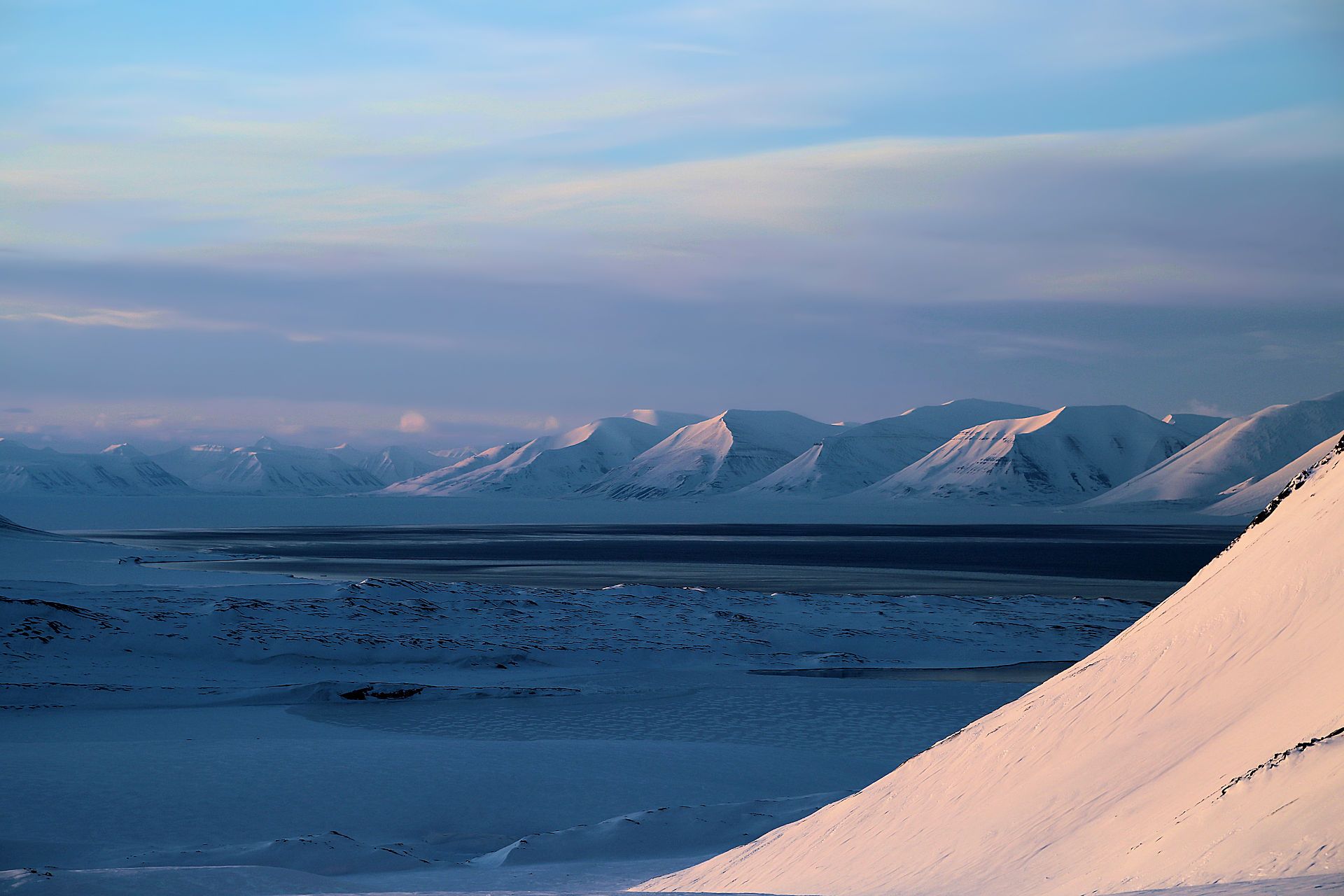Before we could head out to our basecamp we had to pack all our stuff. The equipment of the entire expedition crew had to be loaded onto our transport sleds – duffle bags, board bags, expedition tents, two yurts, food supplies, an oven, kerosene supplies, a mobile kitchen, film and photo material equipment. Once again we stood in front of a mountain of equipment. Don’t know how exactly but we did manage to load everything on our sleds and snowmobiles. Anxious of the days to come we just waited for Steve’s starting signal. “We’re ready boys! Let’s go!”
Following Steve’s snowmobile, our caravan of sledges finally headed out of Longyearbyen to the southwest. Ahead of us a one-day trip through glacier valleys, past the Russian coal mining village of Barentsburg at the Grønfjord and on to Christophersenfjellet.
We were completely overwhelmed by the beautiful Arctic backcountry.
But Steve kept telling us to stay calm as the best was still to come.
And as if he had already guessed it, our euphoria was just too big and distracting and all of a sudden the first rollover with a snowmobile was a fact. Fortunately no one got injured and – with remote help via our satellite phone – we were abel to fix the broken snowmobile and got it back running. Luck seemed to be on our side and we kept our fingers crossed it would stay with us for the rest of the trip.
Steve hadn’t promised too much. The first glimpse of the Fridtjovbreen, the largest glacier in the north of Nordensköld, paid off for all the ordeal to get there. All the untouched, snow-covered mountains were simply breathtaking. Incredible couloirs in all directions, difficult to say which ones to ride first.
We drove further down ot the Van Mijenfjorden, just a short distance away from the location of our basecamp. From here we just had to turn right right into a mountain bowl and headed up to the top of the Sagabreen.
And here we were – at the final destination of our dreams, surrounded by the Hanekammen mountains. Unreal. In the middle of the place we have only known from a picture seen on the internet a few months ago. An image that Ryan made during a boat trip through the fjords of Svalbard two years ago.


